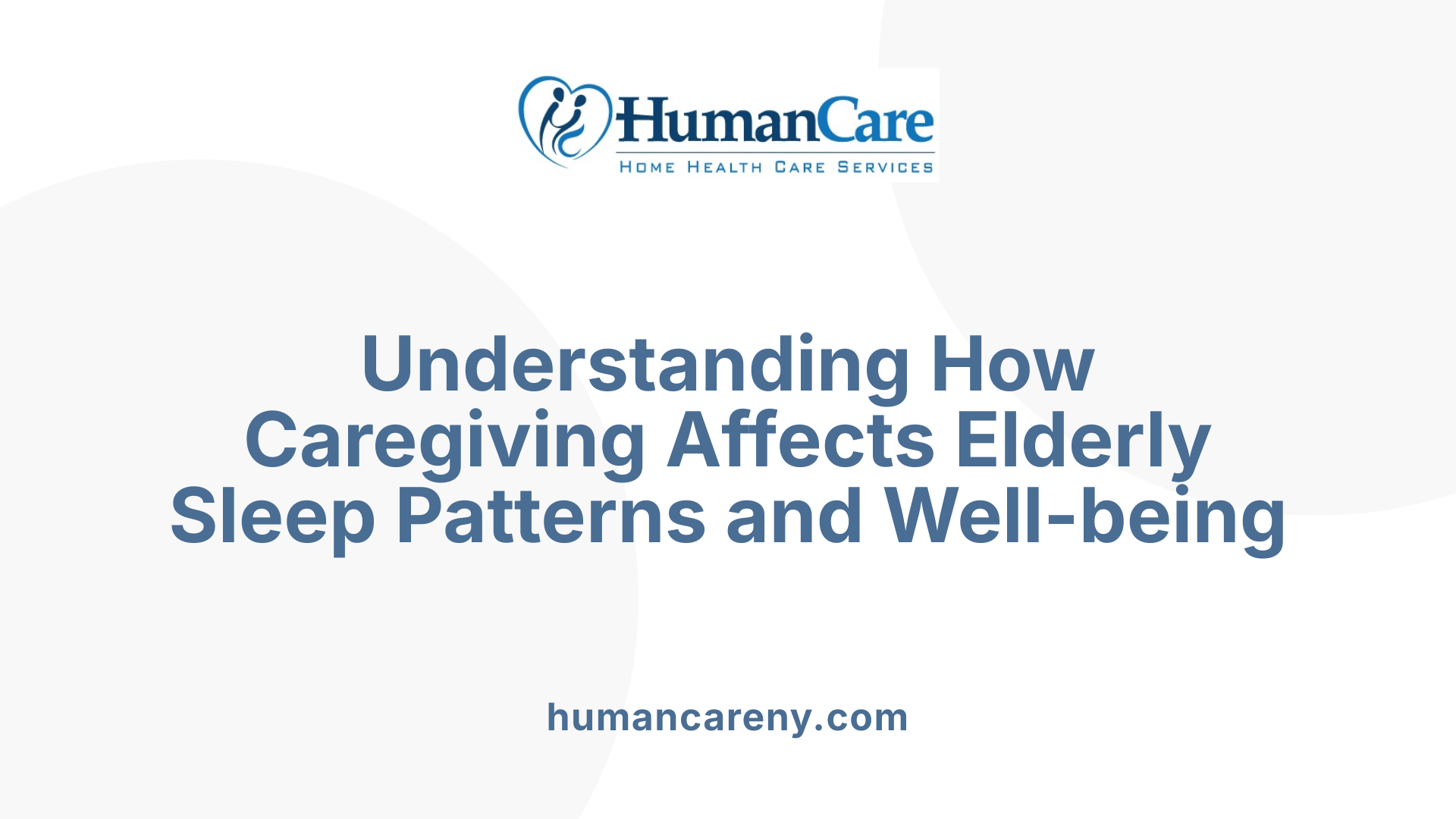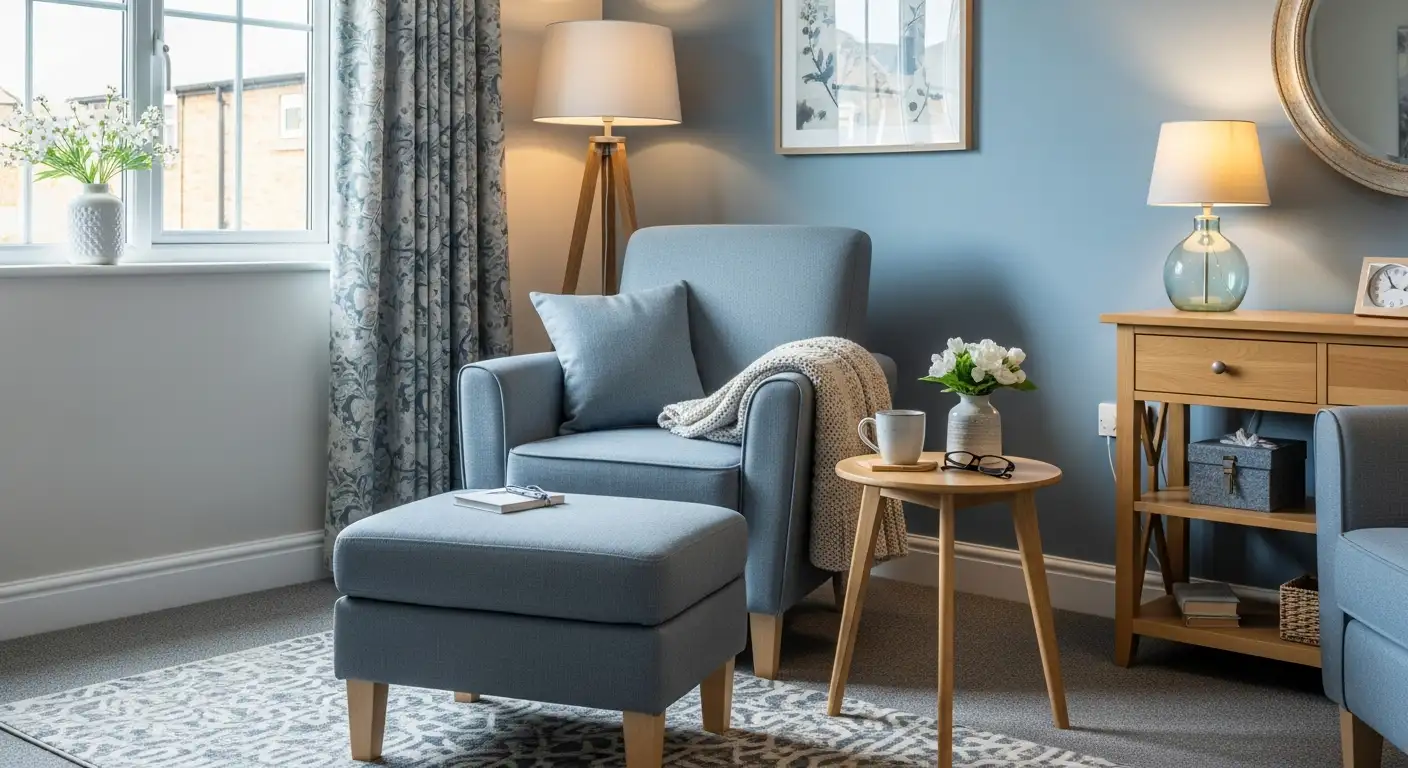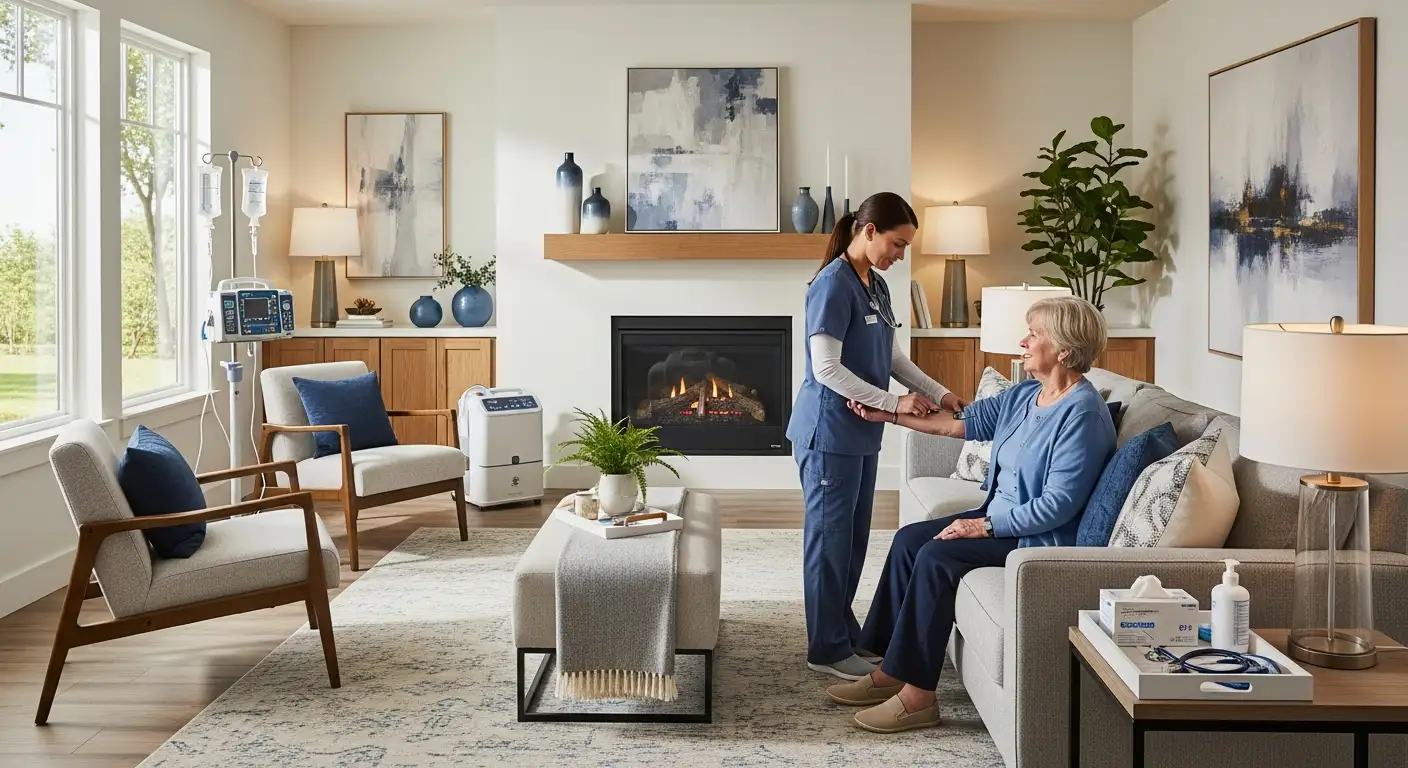The Critical Role of Homemaking in Senior Sleep Health
Quality sleep is fundamental to seniors' overall health and well-being. As people age, changes in sleep patterns and the prevalence of sleep disorders increase, making sleep quality a crucial focus for caregivers and home care providers. This article explores how homemaking care practices and environmental adjustments contribute to improving sleep in older adults, helping them maintain physical health, cognitive function, and emotional stability.
Understanding the Importance of Sleep for Seniors' Health
 Sleep plays a vital role in maintaining overall health and well-being in seniors. It is essential for supporting the immune system, which helps prevent illnesses and supports tissue repair. Adequate sleep also promotes cardiovascular health by regulating blood pressure and reducing the risk of heart disease.
Sleep plays a vital role in maintaining overall health and well-being in seniors. It is essential for supporting the immune system, which helps prevent illnesses and supports tissue repair. Adequate sleep also promotes cardiovascular health by regulating blood pressure and reducing the risk of heart disease.
Additionally, sleep is crucial for cognitive preservation. It aids in memory consolidation, problem-solving, and emotional regulation, which are especially important as age-related cognitive decline becomes more common. Poor sleep quality has been linked to increased risks of dementia and Alzheimer’s disease.
In seniors, insufficient or disrupted sleep can have wide-ranging effects. Physically, it can lead to weakened immunity, increased fall risk due to impaired balance, and worsening of chronic conditions like diabetes and hypertension. Mentally and emotionally, poor sleep often contributes to symptoms of depression, anxiety, and irritability.
Research indicates that many older adults suffer from sleep disorders such as insomnia, sleep apnea, and restless leg syndrome, which further compromise their sleep quality. These issues increase the risk of health complications and diminish quality of life.
Maintaining healthy sleep routines, creating a conducive sleeping environment, and addressing medical or environmental factors are crucial steps in promoting better sleep among seniors. Doing so supports their physical health, cognitive functions, and emotional stability, thereby greatly enhancing their overall quality of life.
Strategies and Practices for Improving Seniors' Sleep Through Home Care

What strategies can be used to improve sleep quality for seniors through home care and homemaking activities?
Improving sleep for seniors often involves a combination of environmental adjustments, routine establishment, and health management. A fundamental approach is establishing and sticking to a consistent sleep routine. Going to bed and waking up at the same time every day helps regulate the body's internal clock, promoting better sleep patterns.
Creating an optimal sleep environment is also crucial. This includes making the bedroom a dark, quiet, and cool space—using blackout curtains to block out light and sound machines to reduce noise interruptions. Ensuring a comfortable mattress and pillows can minimize discomfort and reduce insomnia symptoms.
Encouraging regular physical activity and social engagement during the daytime can help seniors feel more tired at night and improve sleep quality. Light exercises like walking or stretching, as well as social interactions, support circadian rhythms and mental well-being.
Diet plays a role too; limiting caffeine and alcohol intake, especially in the hours before bedtime, can prevent sleep disruptions. Nicotine and heavy meals close to bedtime should be avoided as well. Proper medication review and management of health conditions such as arthritis or sleep apnea are essential to address underlying causes of poor sleep.
To support better sleep, caregivers can help develop relaxing pre-bed routines, such as listening to calming music, reading, or taking a warm bath. These activities signal to the body that it is time to wind down.
When necessary, behavioral therapies like cognitive behavioral therapy for insomnia (CBT-I) and medical interventions can be employed. Proper management of chronic conditions and sleep disorders is vital. For example, treating sleep apnea with CPAP machines or supplementing with melatonin can significantly enhance sleep quality.
Altogether, a tailored approach that combines environmental, behavioral, and medical strategies can greatly improve sleep outcomes for seniors living at home, supporting their overall health and quality of life.
Impact of Caregiving on Sleep Health in the Elderly

How does caregiving affect sleep health in elderly individuals?
Caregiving plays a significant role in the sleep patterns of elderly individuals, especially those who receive care at home or in institutional settings. Research shows that up to 76% of caregivers report experiencing poor sleep quality, a figure that highlights the widespread nature of sleep disturbances within this group.
Female caregivers are particularly vulnerable, often experiencing shorter sleep duration, frequent awakenings during the night, and disruptive sleep cycles. These disturbances are linked to several factors, including the health condition of the person they care for—such as dementia or cancer—and the caregiver’s own mental health symptoms like depression, fatigue, and anxiety.
Poor sleep not only affects caregivers' overall health, increasing risks for chronic conditions, but also influences the quality of care they can provide. Furthermore, the relationship between caregiving stress and sleep quality appears bidirectional: high stress levels exacerbate sleep problems, and poor sleep increases stress, creating a harmful cycle.
Identifying caregivers at risk through these associated factors enables healthcare providers to target interventions more effectively. For example, support programs can address mental health issues, promote better sleep routines, and improve overall caregiving conditions, ultimately benefiting both the caregiver and the elderly individuals they care for.
Environmental Adjustments in the Home to Support Better Sleep

How can environmental adjustments in the home support better sleep for seniors?
Creating an ideal sleep environment is essential for improving sleep quality among seniors. Simple modifications can make a significant difference by minimizing nighttime disruptions.
One of the most effective strategies is controlling the bedroom’s temperature, maintaining a cool and comfortable climate usually around 60-67°F. This helps regulate the body's internal clock and promotes restful sleep.
Light and noise levels are also crucial. Installing blackout curtains can block outside light, creating a dark environment conducive to sleep. Using sound machines or fans can reduce external noise that might wake or disturb seniors during the night.
Comfortable bedding and supportive pillows can alleviate discomfort and help seniors fall asleep faster. Replacing pillows that are moderately uncomfortable, as poor pillow quality is associated with insomnia, can prevent unnecessary awakenings.
Keeping the sleep space tidy and organized not only promotes a sense of calm but also reduces distractions and potential hazards. A clutter-free room can also make it easier for seniors to move safely and comfortably.
Avoiding electronic devices before bedtime is another key step. The blue light emitted by screens can interfere with melatonin production, making it harder to fall asleep. Limiting stimulating activities and disruptive stimuli close to bedtime helps set a calming routine.
By adjusting the home environment thoughtfully, caregivers can significantly enhance sleep hygiene, decrease insomnia symptoms, and support overall health in seniors.
Role of Homemaking Activities and Daily Routines in Sleep Regulation
 Establishing consistent bed and wake times is fundamental to regulating sleep cycles in older adults. By sticking to a regular schedule, seniors’ circadian rhythms are reinforced, which helps them fall asleep faster and maintain better sleep quality.
Establishing consistent bed and wake times is fundamental to regulating sleep cycles in older adults. By sticking to a regular schedule, seniors’ circadian rhythms are reinforced, which helps them fall asleep faster and maintain better sleep quality.
Incorporating relaxing pre-bed activities such as reading, listening to gentle music, or practicing light stretching can signal the body that it’s time to wind down. These calming routines can ease the transition into sleep, reducing the likelihood of nighttime awakenings.
Exposure to natural light during the day plays a significant role in maintaining healthy sleep patterns. Encouraging seniors to spend time outdoors or near bright windows helps reset their internal clocks, promoting more regular sleep-wake cycles.
Limiting daytime naps to brief periods—preferably no longer than 30 minutes and avoiding late afternoon or evening naps—can prevent interference with nighttime sleep. Excessive or late naps often lead to difficulty falling asleep or disrupted sleep in seniors.
Monitoring dietary habits is another essential factor. Caregivers should ensure that seniors avoid caffeine and large, heavy meals close to bedtime, as these can cause discomfort or alertness that hampers sleep. Additionally, limiting fluid intake in the hours before bed can reduce nocturnal bathroom visits, helping seniors stay asleep longer.
Together, these routines and lifestyle adjustments create a supportive environment that helps seniors achieve restorative sleep, maintaining their overall health and well-being.
Summary: The Interplay of Homemaking, Environment, and Care in Enhancing Seniors' Sleep
How can environmental adjustments and home care practices collectively improve seniors' sleep?
Creating a restful sleep environment is fundamental in helping seniors achieve better sleep quality. Practical adjustments such as controlling room temperature, reducing noise and light, and selecting comfortable bedding help establish a serene sleep setting. Using blackout curtains, sound machines, and maintaining a cool, dark room can significantly reduce nighttime disruptions.
Alongside environmental tweaks, establishing consistent routines like calming pre-bedtime activities—reading, listening to music, or light stretching—signals the body that it's time to wind down. Regular physical activity during the day, including walks or light exercises, can promote faster sleep onset and deeper sleep cycles. Moreover, encouraging daytime social interactions and activities can boost mood and reduce anxiety, further supporting healthy sleep patterns.
Ongoing health management is essential. Caregivers should monitor and review medications that may interfere with sleep, collaborate with healthcare providers to address chronic health issues like arthritis or sleep apnea, and provide emotional support to alleviate anxiety and depression.
Personalized care plans that take into account each senior’s unique health conditions and preferences foster more effective sleep strategies. Close collaboration among caregivers, family members, and medical professionals ensures these approaches are tailored, consistent, and sustainable.
In sum, a combined approach that emphasizes a safe, comfortable environment, consistent routines, activity, and health oversight significantly enhances sleep, leading to improvements in overall physical, cognitive, and emotional well-being in seniors.
Supporting Long-Term Sleep Health in Seniors
Incorporating thoughtful homemaking practices, environmental adjustments, and comprehensive care strategies plays a vital role in improving the quality of sleep for seniors. Creating a safe and comfortable sleep environment, establishing consistent routines, promoting physical and social activity, and addressing health-specific issues can make a profound difference. Caregivers and home care providers are essential in implementing these practices, which foster healthier sleep patterns, reduce sleep disturbances, and enhance overall well-being. Continued collaboration with healthcare professionals ensures these efforts are tailored to meet individual needs, helping seniors enjoy restorative sleep that supports their longevity and quality of life.
References
- How Adult Caregiving Impacts Sleep: a Systematic Review - PMC
- How In-Home Care Services Can Help Seniors Sleep Better
- The Role of Caregivers in Promoting Better Sleep - Home Matters
- The Importance of Sleep for Seniors: How Home Care Can Help
- How In-Home Care Promotes Better Sleep for Seniors
- How Caregivers Can Support Healthy Sleep in Seniors
- Sleep Environment and Insomnia in Elderly Persons Living at Home
- Enhancing Sleep Quality for Seniors with Home Care Assistance



